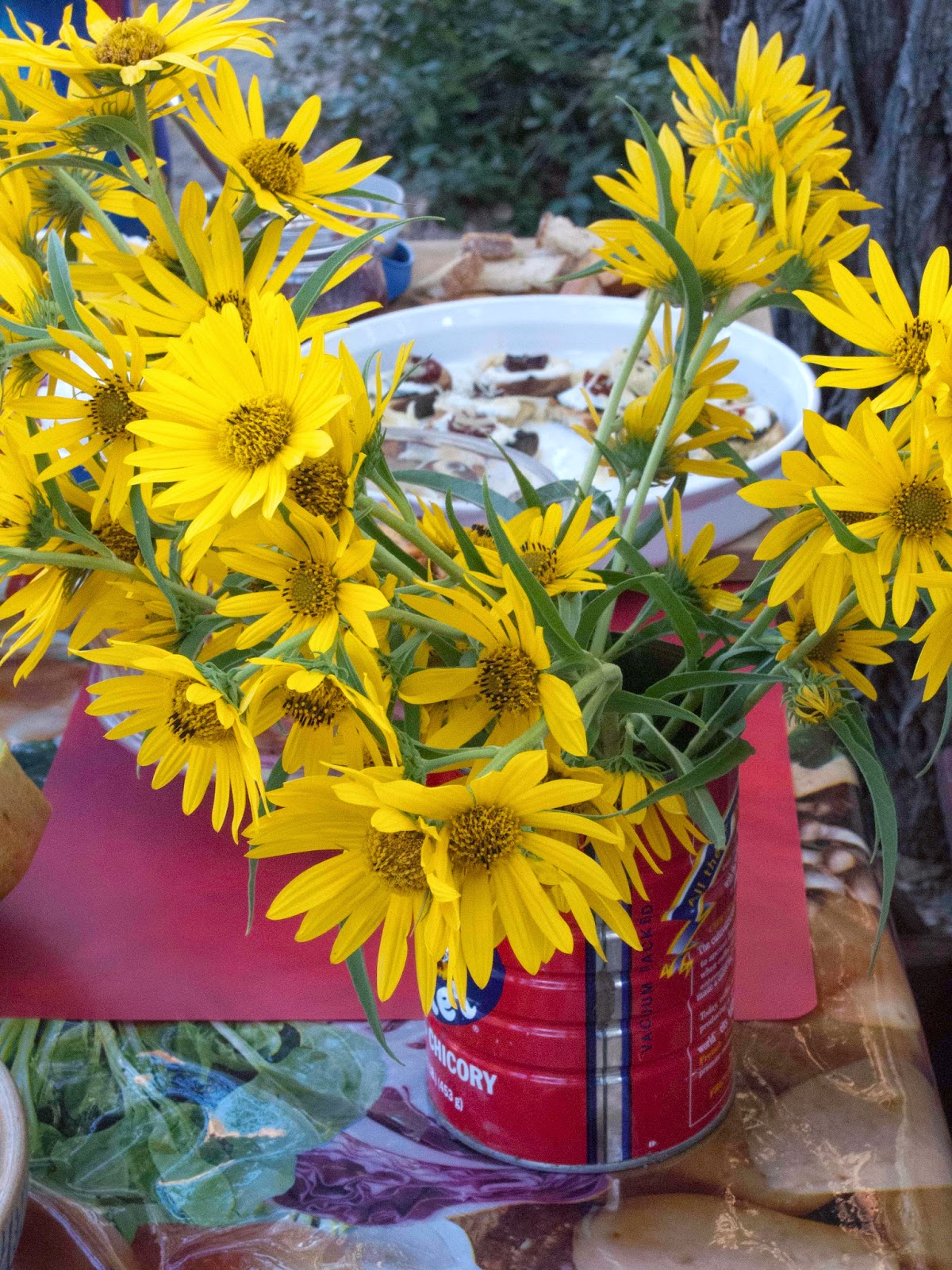With the cooling weather of autumn, the garden is winding down from our sixth growing season. Three new households joined the garden this year and, at this time, we are recruiting new members for the 2015 growing season. If you’re interested, contact us at: SPGardenInfo@gmail.com.
We now have a blog which is open to the general public. Our posts include brief summaries of organic gardening information with links to more detailed information, recipes, and reports of our social Tastings in the Garden, work day efforts, and Potlucks with a dash of business meeting. Feel free to visit us at: SPCommunityGarden.blogspot.com.
The weather this year conspired to give us bountiful harvests of fruit, grapes, and a wide variety of vegetables. The bountiful food also brought bountiful bugs. Smelly squash bugs are no one’s friend but the lovely turquoise green shield bugs passed through without excessive damage. The iridescent green scarab beetles, on the other hand, while beautiful, would have happily eaten their way through all our fruit without some diligent attention. Now is the time to be on the lookout for the grubs that will become those bugs next summer.
The colorful zinnias and sunflowers in the first row add a bright note to the garden and have become a visible reminder of the beauty of a garden for all who walk or drive down Cedar. Even though the traditional summer vegetable garden is winding down for the fall and winter now, we are planting vegetables that can withstand our relatively mild winters: now is the time to put out chard, kale, spinach, lettuce, and other greens. It’s a bit late for winter harvest now (August/September would have been the ideal time to get those plants started) but it’s still possible to get them growing so that they’ll be ready to produce abundantly come spring. Some of the root vegetables will winter over, especially the slow-maturing ones like parsnips. And, it’s nearly time to plant garlic. Truly, the garden year never ends!
In the words of our gardeners
I like being in the garden because I enjoy the connection that comes from growing the food that I eat and that I feed to my family. I like the fact that the food is organic and very local. It has also been a good way to get to know my neighbors.
One of the cornerstones of our garden philosophy is growing organic. Many’s the time that it is so tempting to bring out the pesticides, especially when the bugs seem to be eating all our produce. But the time and attention required by an organic garden lead to a connection to land, food, family, and neighbors.
When I was going through chemo for appendiceal cancer, it was wonderful therapy to work in the soil. I have also learned so much from my gardening neighbors about plants, and soil prep, and composting, and orchards. It's a great place to learn if you are just starting out like I was 3 years ago.
I enjoy the garden for the friendship and the camaraderie. I love the beauty of our garden with the colors, textures and delicious results!
Our garden is not all work and food production. Members often work in their own rows quietly and alone to experience the peace and respite that come from working the soil. The garden attracts a range of birds and butterflies that are amazing and beautiful. At the other end of the social spectrum, the garden is also a place for friendly gatherings. Throughout the summer we have Tastings in the Garden where we meet and share food prepared from the fruits and vegetables we’re harvesting at the moment. These strictly social afternoons or evenings give us an opportunity to visit without thinking about the business of working a garden, to enjoy the fruits of our labors.
This year we've been saving seeds to help the Bosque Seed Collective develop hyper-local varieties such as beans, tomatoes, arugula, and chard. I hadn't realized the challenge that comes from having to grow them longer than you would normally. Seeds are expensive because they take work and extra space to grow!
The garden is an evolving experience and members make suggestions for new projects each year. This year we started a community herb row with favorites such as tarragon, basil, parsley, onion and garlic chives, thyme, oregano, and rosemary. We also participated in the Bosque Seed Collective project and contributed collard, arugula, and bean seed,s among others, to the effort. Some of the collards have been planted by our members for a fall/winter harvest and are rapidly growing now.
And, in conclusion, the following quote from one of our founding gardeners really summarizes all that is good about our garden:
4 Reasons Why I Really Love Being a Member of the Spruce Park Neighborhood Garden
1 The community it has built
2 The gardening knowledge that has been shared
3 The 2 block walk down an alley to the garden where I savor its beauty and then
see what it offers for that evening's dinner
4 The occasional evening group tastings around the garden picnic table where members offer delicious dishes made from garden produce: melon lassi, roasted Roma tomatoes, stuffed peppers, parsnip fries, salsas, casseroles, gazpacho, plum cobbler, ice cream...oh my!















